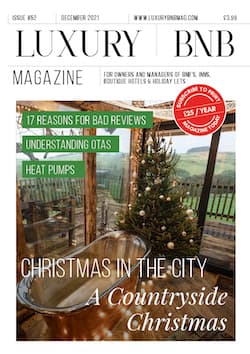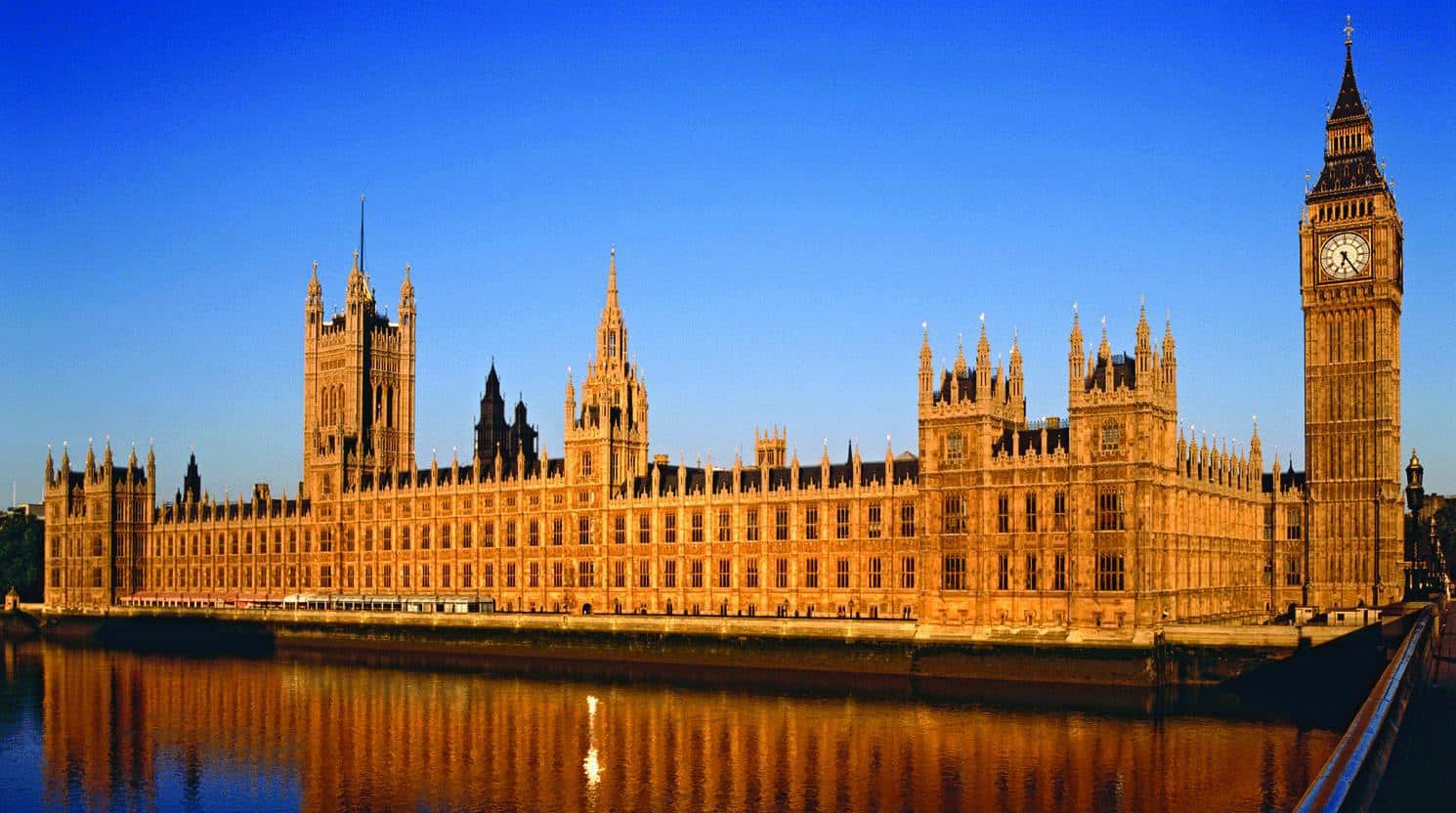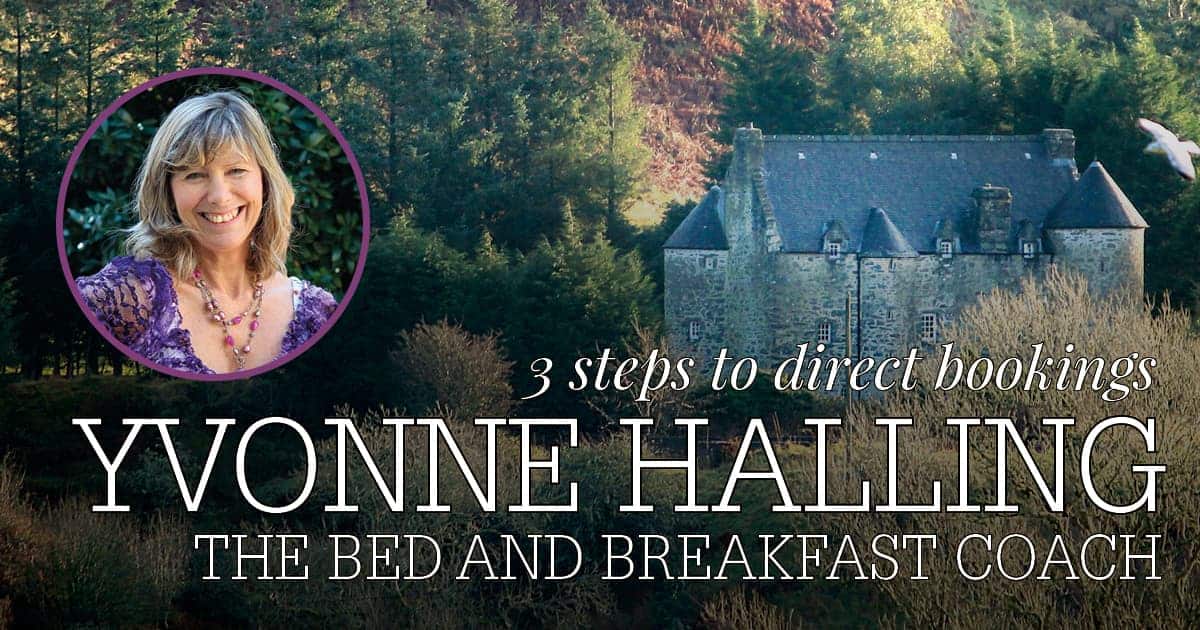
What is an ota – Online Travel Agency ?
OTAs are a largely web-based marketplaces used by guests to find places to stay. They can be niche (e.g. for dog owners) or broad (like booking.com). They can contain travel information, flights and car hire OR they can just list accommodation. We’ve created a list of 84 leading OTAs here.
OTAs can have huge marketing budgets and will potentially give you instant access to millions of new customers, from all over the globe. Sites like booking.com and expedia are now hugely successful, profitable companies taking millions of bookings per year.
The aim is that guests can book with confidence using a well known platform they trust. OTAs are now a necessity for running a successful BnB or holiday rental business.
How do OTAs charge?
Commission based OTAs:
OTAs like booking.com tend to have zero setup costs, so you can “dip your toe” without too much of an initial outlay. Commission on bookings is varied, between 6% – 30%.
OTAs charging Annual Fees:
Often called Directories (e.g. bedandbreakfastnationwide.com) tend to have annual costs (typically between £199 – £900) and sometimes a setup fee. Directories often link to your own website (direct booking) to fulfil the payment and booking.
Since the booking is made with your property directly, you have complete control of booking, payment and cancellation policies.
| Commission based websites | Annual fee websites |
| Usually £0 setup fees. you can “dip your toe” without too much of an outlay. | Usually charge an annual fee with no fees for |
| Commission on bookings- 6% – 30%. | May charge a small processing fee but normally link to an external site to take the booking. |
| The OTA owns the guest / customer and so they have control over booking and cancellation policy. | Since the booking is often taken on your own website, you have full control over policies |
| Since they only make money when guests book, priority is given to the properties making the OTA the most money. Your property can be demoted in the search results if you fail to attract enough bookings. | You are paying to advertise and so your site’s visibility will remain constant. |
| Tend to be more about volume and size and as such are more generic. | Often serving a niche. |
Advantages of listing on OTAs
- The booking contract is between the OTA and the guest. The guest is reassured that their booking is safe.
- Simple, quick and cheap way to list your properties to a world-wide audience.
- No need to spend up-front on your own website or online marketing. OTAs invest in marketing and advertising.
- OTAs are well known and popular with customers who like to compare accommodation costs and the services offered by individual providers.
- OTAs can have huge development budgets developing fantastic user-friendly features. E.G. One-click booking and payment, translation tools and booking management.
- OTAs will have tools to encourage visitors to leave more reviews.
- Billboard effect (SEE CALL OUT): OTA’s Impact on quantity of Non-OTA Reservations
- Access to rich tools, analytics and insights
- OTAs offer many different ways to pay and always ensure payment.
- You will get some guest verification with a booking from the OTA.
- Some OTAs have excellent connections to google search results.
Disadvantages of OTA
- OTAs charge commission on every sale and can be an expensive option – between 6-30 %.
- Price parity – Once a price has been set on an OTA, they are often not allowed to compete with that price by listing it at a lower rate on their own website.
- You need to adhere to the OTA’s booking and cancellation policies – which might be different to your own.
- Some OTA’s restrict the amount of customer information you receive. This is designed to reduce the possibility of you marketing directly to that customer next time they want to book.
- There can be a shift in the relationship between you and the guest as some customers have strong brand loyalty to the OTA. This may result in guests treating your place with less care and consideration as it’s considered a faceless place online.
- You may need to find a way of managing room availability across a range of OTAs, your own website, front desk and telephone sales. This can be time consuming and labour intensive. There are software options to help you manage this – e.g. SiteMinders Channel Manager.
- Using OTAs does not reduce the need to have your own website with a booking engine. OTA’s should be used as a part of your digital marketing and not the only source of online bookings. You may still need to invest in a balanced multi-channel marketing strategy.
What is the Billboard Effect with an OTA?
Properties that are listed on third-party OTA websites, gain a reservation benefit in addition to sales via the OTA. I.e. having your site listed on an OTA can also increase reservations via other channels – e.g. your own website. This is potential because customers first discover you on an OTA, are re-assured and then go on to book directly.
In a Cornell University experiment, a group of hotels was listed and then removed from Expedia.com in alternate weeks. This test found that, compared to being hidden, being listed on Expedia increased reservations from 9% to 26% (above transactions that occurred at Expedia).
Another study also found that around 75% of consumers who made a reservation with a major hotel brand had visited an OTA before booking directly with the hotel.
Tips to make the most of the Billboard effect:
- Select well known or respected OTAs
- Make the direct booking process as fast and as easy as possible. As close to that of the OTA as possible. Guests will give up and book via the OTA if they hit a sticky patch in the booking process.
- Offer multiple ways to pay. For example it the OTA offers credit card processing, you need to offer it.
- Compare the booking deposit of your direct site with that of the OTA. Guests will select the smaller deposit
- Stay in touch with the guests before their arrival. You need them to feel as loved with the direct booking as they do with the OTA.
– Source: Expedia Group
Your OTA Strategy
OTAs should be a part of your room-booking strategy but be careful not to become overreliant.
You should continue to work on your own website, social media and other techniques to encourage direct bookings.
WARNING: You might think of using OTAs to attract guests during less popular weeks. This is a good strategy as it is often easy to attract guests during peak weeks. However OTAs might see a drop in bookings for these weeks and drop your listing in the search results.
View from freeonlinebooking.com
“OTAs provide a very easy way for accommodation businesses to fill their rooms. As this can prove a very expensive way to get bookings, freeonlinebooking.com recommends that you develop a book direct strategy and use OTAs to fill in the gaps rather than as your primary source of bookings. You will need to ensure that your website and online booking service looks good, is easy to use and is well ranked in search engines. You will need to give customers reasons to book direct with you. You will need to communicate with your customers frequently with marketing emails, TXT messages and social media. You will need to educate guests on why they should be booking direct with you. With just a few changes to the way you operate your business, you should be able to significantly increase your profitability by minimising high commission bookings.”
– Nick Hill, Managing Director of freeonlinebooking.com
Tips for selecting the right OTAs & Directories
- OTAs come in all shapes and sizes from giant, billion-dollar companies, to tiny, niche and personalised websites. There are also lots of them – we have listed 86 UK based OTAs on our website.
- With a good channel management system, you can set up and post on many OTAs at once, so there is an argument for letting the guests decide which OTA you should work with. You could then narrow down the list by removing the OTAs that are not working for you.
- A targeted and well considered list will focus your efforts and build up your knowledge and relationship with a few rather than many.
- We recommend a list of 3-10 OTAs. Within that, I would select a combination of large genertic OTAs and specific niche websites. Example: Booking.com, Home & Away, Sykes, Dog Friendly

OTAs: View from The B&B Association
“Online travel agencies (OTAs) can be a great marketing tool for B&B owners and hoteliers, but we advise managing the relationship carefully” says David Weston of the Bed & Breakfast Association.
The B&B Association has lobbied hard for fair treatment of small businesses by the two giant global OTAs, since filing five formal complaints with the competition watchdog (CMA) in 2017.
The Association advises accommodation owners:
- Don’t put all your eggs in one basket: go for a balanced distribution model using more than one OTA and also of course maximising your direct bookings
- Regularly do searches for your property as is you were a prospective guest, and see how you are presented in search results, and where your own website comes
- Charge a deposit on booking – or if you do not, prepare for hugely higher cancellations and noshows
- Keep tight control of your cancellation policy to protect your business from late cancellations and “no-shows”
- Use technology to keep “ownership” of your relationship with your guests – eg online check-in, loyalty offers, upgrade offers etc.
- Build an email database of guests and keep them informed of your direct offers and prices
- Make the most of social media to communicate with your guests.
For more details, see: www.bandbassociation.org
– From David Weston, Chairman of the B and B Association
Who does the OTA appeal to?
Many OTAs target specific audiences, like dog owners or water sport enthusiasts. Others might target a specific region.
Consider your target audience – refer to Chapter 1 of the Luxury BnB Ebook: Getting Started in Holiday Rentals. Once you have decided on your target market, consider which OTAs would appeal to that market.
We have listed some of the target markets on our website. Each OTA should detail their audience or you can contact them directly for more information before signing up.
Look at which OTAs your local competition is using. Look at pricing and whether you feel your site would sit nicely alongside – how do you think you would appear in the search results?
For example, some OTAs display prices at the front and centre of the search results. This is an advantage for the cheaper places but you might feel it would create a disadvantage.
Create a list of target OTAs along with some kind of ranking.
What is the guest experience on your chosen OTA?
What do you think of their website and customer journey to booking? Try to dream up a holiday and follow the booking process to see how easy it is or whether there are any complications. Would this work for your audience?
What search features are there? How would people find your property? In addition to the guest experience, what features are available to partners? What support is on offer – email only or telephone?
Booking & Cancellation Policy on OTAs: Things to Consider
- How do you book out rooms – what is your minimum booking term and change-over days?
- How do the OTA’ verify their guests?
- You might not accept bookings from single-sex parties, dog owners or children – is this possible with the OTA? Can you use these constraints to select which OTA to work with?
- How does your cancellation policy match up with the OTAs?
- How do your payment terms match up the OTAs?
Package your rooms…
Can you combine your property with other travel products – other properties in different areas, flights, events, local restaurants?
Guests can use an OTA to design their entire holiday. Can you think of a way to capitalise on this?
Start listing / Sign-up on an OTA…
#1 Complete the sign up form
- Property address
- Property type (hotel, vacation home, apartment, etc.)
- Number of individual spaces that can be booked at each property
- Contact details for ongoing correspondence
#2 Verify your account
- Agree to the terms & conditions
- You will need any tax and regulatory information ready if required by your local government
#3 Create your listing
Enter all the details that travellers will want to know about your rooms, grounds and facilities
- Details about rooms—layout, bed size, etc.
- A list of available amenities—from Wi-Fi to swimming pools
- Rates by type of room
- Pictures of rooms, common spaces and amenities
- A list of fees, deposits and policies
- The dates you’re available to welcome guests
#4 Correspondence
You have now potentially opened up bookings from all around the world, 24/7.
How can you handle these booking requests quickly and without too much interruption to your day? Consider installing the OTAs app on your phone? Ensure your email system is reliable.

Top Tips for creating an OTA listing from Laura Lewis, Director of The Wanderlist:
Photographs
Good quality photographs taken by a professional that showcase the property. My advice would be that if taking any outside shots to schedule a spring/summer shoot so that the property looks bright and fresh.
Instant Booking
Having a website allows users to browse and book without having to contact the owner. People book on the ‘spare of the moment’ and don’t necessarily like waiting for a response. Make it easier for them by having your own website.
Sync Calendars
To be able to sync property calendars with an Online Directory, owners will need to send the ical for each property they wish to advertise and almost every booking system has the ability to export one. This allows users to identify availability and avoid any unnecessary enquiries.
Extras
Offer those ‘extra’s’ whether that be hampers, treatments, homemade cake, bread to make them stand out. People may also be booking on what is in your surrounding area, if they know about a particularly wonderful wild swimming spot or a fantastic hike, share this as it may put them on the map.
– From Laura Lewis, Director of Squirrel’s Nest and The Wanderlist. The Wanderlist is an online directory. Visit thewanderlist.uk for more info
Managing OTAs: Syncing the diary
You’ve decided on which OTAs to work with, set up your profile and you are now accepting bookings. So how do you keep the booking diaries for the various OTAs synched with your website and other booking calendars?
Manually: This might be possible if you are just running 1 or 2 OTAs alongside your own website but virtually unmanageable with many more than that. It would take hours and mistakes are sure to creep in.
Many OTAs have the feature to synchronise the booking calendar with a Google calendar using iCal. This is a little complex to set up and involves creating multiple Google Calendars for each room.
The other issue with this method is the way OTAs treat the end date. Some consider a date as just the night, so a booking from 1st – 2nd would be considered a 2 night booking on some OTAs and a 1 night booking on others. Make sure you check this when signing up and syncing calendars.
The advantage with this system is that it’s free. It’s “good enough” if you only have 1 property and only use a few OTAs. It also allows you to use the Google Calendar as a master booking calendar which can be shared out with others – e.g. Cleaners and Maintenance people.
However for a more comprehensive setup and more control, we’d recommend using a Channel Manager.
What is a channel manager?
A channel manager (like Siteminder.com) is web based software that distributes and manages your property to multiple OTAs.
The core features are listing, diary and pricing management, but many OTAs offer website builders and marketing tools.
They allow you to manage your booking from a single place, quickly, with far fewer opportunities for errors and possible overbookings.
The only disadvantage of using a Channel manager is the cost, which needs to be weighed up against the huge time and error saving advantages.
See also: Dynamic Revenue pricing software
Tools to help with your strategy:
- OTA websites
- Property Owners forums on social media
- Reviews on uk.trustpilot.com
- B&B Associations
Tips for encouraging more direct bookings from repeat customers
It’s very important that you don’t become over reliant on OTAs. You can potentially keep more of the booking fee with a direct booking. Many successful accommodation providers use OTAs to attract new customers and then encourage them to book directly next time.
- Create the connection. Connect with the guests so they see your property as more than a listing on an OTA
- Consider ways to keep them connected to your business, e.g. eNewsletters or Social media
- Ensure your website is solid – it can’t be as feature rich as an OTAs but it must be easy to find and easy to book.
- Look at your property on search engines. Too many property websites sit below the OTA’s website listing your property. We have covered search engine optimisation in the magazine before but the advice tends to be unique to your property.
- To help with this you might need a google expert – Please contact us at Luxury BnB Magazine for more information.
- Look at your ‘Google My Business page’ and ensure your direct booking link is listed as the website.
- Consider using Google Advertising to place your business above that of the OTA

OTAs: A view from Little Hotelier
“In addition to the most popular OTAs such as Booking.com and Expedia, some of the biggest revenue drivers for our customers include Airbnb, Mr and Mrs Smith for the upper end of the market, and Hostelworld for budget options,” said Harini Boppana, Product Director of Little Hotelier.
“There’s also a whole host of niche channels performing strongly for specific property types. These include Pitchup.com (for camping and glamping), and i-escape and Off Peak Luxury for high average daily rate (ADR) accommodation.
Alongside these, there’s growth in platforms such as Staylists and Tourism Exchange Great Britain (TXGB), which quickly and easily connect small accommodation providers with destination marketing organisations (DMOs).” For more detail, see: www.littlehotelier.com
Read this and other great stories in the December 2021 issue of Luxury BnB Magazine.

[woocommerce_one_page_checkout template=”product-list” product_ids=”13630″ category_ids=””]



